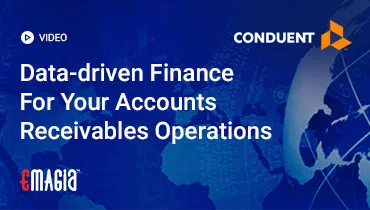Introduction to Credit Letters
Credit letters are essential financial tools that ensure secure payment in trade transactions, especially in international trade. They act as a guarantee from a bank that a seller will receive payment from the buyer, provided specified conditions are met. This creates trust between parties who may not have an established business relationship.
Credit letters are not just a payment guarantee but also a risk mitigation mechanism that promotes smoother trade flow by reducing uncertainty. In global trade, they are often governed by the UCP 600 rules, which standardize their usage worldwide.
Understanding Letters of Credit (LC)
A Letter of Credit (LC) is a formal undertaking by an issuing bank to pay the seller a specified sum within a defined period, provided that the seller submits certain compliant documents. LCs facilitate trade by offering payment security and minimizing the risk of default.
Key Features of Letters of Credit
- Bank guarantee of payment
- Conditional upon document compliance
- Widely used in import-export transactions
- Regulated by UCP 600 rules
Importance of Credit Letters in International Trade Finance
In international trade, buyers and sellers often operate across different legal jurisdictions, languages, and business practices. Letters of credit bridge these gaps by providing:
- Payment Security: Guarantees payment if conditions are met.
- Risk Mitigation: Protects sellers from non-payment and buyers from non-delivery.
- Financial Confidence: Supports trust between trade partners.
- Cash Flow Management: Facilitates smoother transaction cycles.
- Global Trade Expansion: Enables trade with new partners in different markets.
Key Parties Involved in Credit Letters
The process of a letter of credit involves several key parties, each with specific roles and responsibilities.
Issuing Bank
The bank that issues the LC on behalf of the buyer. It guarantees payment to the beneficiary (seller) once all conditions are met.
Applicant (Buyer/Importer)
The party requesting the issuance of the letter of credit. The applicant ensures that the LC aligns with the terms agreed upon with the seller.
Beneficiary (Seller/Exporter)
The party in whose favor the LC is issued. They are entitled to receive payment if they comply with the LC conditions and submit the required documents.
Advising Bank
The bank that informs the beneficiary about the LC issued by the issuing bank. They verify the authenticity of the LC but do not guarantee payment unless confirmed.
Confirming Bank
An optional bank that adds its own guarantee of payment to the LC. This is particularly useful in transactions involving higher risks or unfamiliar jurisdictions.
Types of Letters of Credit
Letters of credit are not a one-size-fits-all financial instrument. Depending on the needs of the buyer, seller, and transaction, there are several types designed to suit different trade scenarios. Each type offers unique advantages and requirements.
Standby Letter of Credit (SBLC)
An SBLC acts as a safety net for the beneficiary. It is used as a payment guarantee in the event that the buyer fails to fulfill the contract. Standby LCs are widely used in project finance, construction, and cross-border trade to provide security without requiring upfront payment.
Commercial Letter of Credit
This is the most common type of LC used in trade finance. It guarantees payment to the seller once they present compliant shipping and invoice documents. Commercial LCs facilitate trust between parties, particularly in international trade where parties may not know each other well.
Traveler’s Letter of Credit
This type of LC is issued for travel purposes, allowing a traveler to draw funds from a bank abroad. Though less common today due to modern payment methods, it remains relevant in certain cross-border travel and business contexts.
Back-to-Back Letter of Credit
Back-to-back LCs are used in transactions where an intermediary (such as a trader) purchases goods from a seller under one LC and sells them to another buyer under a second LC. This arrangement allows the trader to finance the purchase without immediate cash flow.
Red Clause Letter of Credit
In a red clause LC, the beneficiary is entitled to receive an advance payment before shipping the goods. This is often used when the seller needs working capital to produce or ship the goods. The advance reduces the seller’s risk and facilitates timely delivery.
Irrevocable vs Revocable Letters of Credit
Understanding the difference between irrevocable and revocable LCs is essential for managing risk.
Irrevocable Letter of Credit
An irrevocable LC cannot be modified or cancelled without the agreement of all parties involved. This offers high security for the beneficiary and is the most common type in international trade.
Revocable Letter of Credit
A revocable LC can be amended or cancelled by the issuing bank without prior consent from the beneficiary. Because of the risk involved, revocable LCs are less common in trade finance.
Confirmed vs Unconfirmed Letters of Credit
The confirmation of an LC adds an extra layer of security for the beneficiary.
Confirmed Letter of Credit
A confirming bank, usually in the beneficiary’s country, adds its guarantee to pay the LC amount. This ensures payment even if the issuing bank defaults.
Unconfirmed Letter of Credit
An unconfirmed LC relies solely on the issuing bank’s guarantee. Beneficiaries must trust the financial stability and credibility of the issuing bank.
The Process of Credit Letters
The process of a letter of credit is a structured sequence of steps designed to ensure security and compliance for both buyers and sellers in trade transactions. Governed by UCP 600 rules, the process balances trust and risk mitigation in international trade.
Step-by-Step Execution of a Letter of Credit
- Negotiation and Agreement: The buyer and seller agree on the terms of the sale, including payment method and delivery terms.
- Application for LC: The buyer applies to their bank (issuing bank) to issue a letter of credit in favor of the seller (beneficiary).
- Issuance of LC: The issuing bank creates the LC and sends it to the advising bank, which communicates the LC to the beneficiary.
- Preparation of Documents: The beneficiary prepares shipping and payment documents in compliance with the LC terms.
- Document Submission: The beneficiary submits the documents to the advising or negotiating bank.
- Document Examination: The bank examines the documents to ensure compliance with LC terms.
- Payment: Once documents comply, the bank pays the beneficiary.
- Reimbursement: The issuing bank reimburses the negotiating bank for the payment made.
Key Documents in LC Transactions
Documents are the core of the letter of credit process. Their accuracy and compliance directly affect payment.
- Bill of Lading (B/L): A document issued by a carrier to acknowledge receipt of goods for shipment.
- Commercial Invoice: A detailed statement provided by the seller, listing goods and terms of sale.
- Insurance Certificate: Proof of insurance covering the goods during transit.
- Packing List: A document detailing the contents and packaging of the shipment.
- Certificates of Origin: Documents certifying the country of origin of the goods.
- Inspection Certificates: Certification that the goods meet agreed quality standards.
Document Examination and Handling Discrepancies
Document examination ensures compliance with LC conditions before payment. Discrepancies are common and can delay payment.
Common Discrepancies in LC Transactions
- Mismatched information between invoice and LC terms
- Incorrect or missing signatures
- Non-compliance with shipping deadlines
- Incomplete or inaccurate documentation
- Errors in bills of lading or certificates of origin
Handling Discrepancies
Banks typically notify the applicant and beneficiary of discrepancies. Resolving them requires close communication, corrections, and sometimes amendments to the LC. Automation and document verification tools can significantly reduce discrepancies and speed up compliance.
Advantages of Credit Letters
Credit letters offer significant benefits in trade finance by providing security, trust, and efficiency. They help mitigate risks for both buyers and sellers while facilitating smoother trade operations.
- Payment Security: Letters of credit guarantee payment upon compliance with agreed terms.
- Risk Mitigation: Protect sellers from non-payment and buyers from non-delivery.
- Cash Flow Management: Allows buyers and sellers to better manage working capital and liquidity.
- Facilitates Global Trade: Supports transactions in different jurisdictions with varying legal frameworks.
- Proof of Buyer Creditworthiness: Acts as an assurance that the buyer is financially reliable.
- Reduced Transactional Risk: Provides a structured and regulated process for cross-border trade.
- Enhanced Business Credibility: Builds trust between trade partners.
Common Challenges with Credit Letters
While letters of credit are powerful tools, they come with challenges that can complicate trade transactions.
- Document Discrepancies: Errors in required documents can cause delays in payment.
- Complexity of UCP 600 Rules: Understanding and applying the rules can be difficult for some businesses.
- High Transaction Costs: Issuing and processing LCs involve bank fees and administrative expenses.
- Time-Consuming Processes: LC processing can be slower due to the volume of document checks and approvals.
- Lack of Transparency: Multiple banks and parties involved can cause communication gaps.
- Currency Exchange and Regulatory Risks: International transactions carry exposure to currency fluctuation and compliance risk.
How Emagia Transforms Credit Letters and Trade Finance
Streamlining Letters of Credit with Intelligent Automation
Emagia delivers a state-of-the-art platform that simplifies and accelerates letters of credit and trade finance processes. Through automation, intelligent document processing, and compliance tracking, Emagia empowers businesses to overcome the complexities of credit letters.
- Automated Document Examination: Reduces discrepancies and accelerates LC processing.
- Real-Time Tracking: Allows stakeholders to track the LC status at every stage.
- Compliance Assurance: Ensures adherence to UCP 600 and other regulatory frameworks.
- Risk Reduction: Minimizes errors and prevents delays in payment.
- Enhanced Operational Efficiency: Reduces costs and streamlines workflows.
Future Trends in Letters of Credit and Trade Finance
The future of letters of credit is driven by technology, digitization, and global market trends. Businesses that adopt advanced solutions will benefit from faster, safer, and more efficient transactions.
- Digital Letters of Credit: Fully paperless LCs supported by secure digital platforms.
- Blockchain Integration: Immutable record-keeping and automated smart contract execution.
- AI-Powered Compliance: Automated document checking for faster approvals and reduced discrepancies.
- Real-Time Trade Finance Platforms: Enhanced transparency and communication across all stakeholders.
- Smart Contracts: Automatically enforce LC terms upon fulfillment of conditions.
Frequently Asked Questions (FAQs) about Credit Letters
What is a Letter of Credit and why is it important in trade?
A letter of credit is a bank-issued document guaranteeing payment to the seller upon compliance with agreed terms. It is crucial for mitigating risks in international trade by assuring payment security and enabling trust between trading partners.
How does a Standby Letter of Credit work?
An SBLC acts as a payment guarantee if the buyer fails to fulfill the contract. The seller can claim payment by submitting compliant documents to the issuing bank. It is widely used in project finance and cross-border trade.
What are the main types of Letters of Credit?
The main types include Standby LC, Commercial LC, Traveler’s LC, Back-to-Back LC, and Red Clause LC. Each type caters to different transaction needs, risk profiles, and payment arrangements.
What is the difference between irrevocable and revocable Letters of Credit?
An irrevocable LC cannot be modified or canceled without all parties’ consent, offering high security. A revocable LC can be changed or canceled unilaterally by the issuing bank, but carries more risk for the seller.
What is a discrepancy in LC documentation?
A discrepancy occurs when documents presented do not fully comply with LC terms. Common examples include mismatched invoice details, missing signatures, or incorrect shipping dates. Discrepancies can delay payment.
How can discrepancies in Letters of Credit be minimized?
Automation tools, detailed pre-checks, and clear communication between buyer, seller, and banks can significantly reduce discrepancies. Advanced document verification solutions are increasingly used to streamline this process.
How do Letters of Credit mitigate payment risks?
By involving banks as guarantors, LCs ensure sellers receive payment if terms are met and buyers receive goods as agreed. This reduces risks of non-payment or non-delivery, particularly in cross-border transactions.
What role does Emagia play in improving LC processes?
Emagia offers automation and intelligent document processing solutions that simplify LC management. This includes real-time tracking, compliance assurance, discrepancy reduction, and faster payment cycles.
Final Conclusion
Letters of Credit have been a foundation of secure trade for decades. They bridge trust gaps between buyers and sellers, ensure payment security, and support the growth of international commerce. However, complexity, documentation requirements, and potential discrepancies present challenges.
The good news is that advancements in technology — particularly automation, AI, and digital platforms — are transforming LC processes. Platforms like Emagia enable faster, more transparent, and more reliable trade transactions, paving the way for a future where Letters of Credit remain central but far more efficient in global trade.
Businesses that adapt to these innovations will not only reduce risk and costs but also strengthen their competitive position in an increasingly interconnected global economy.



